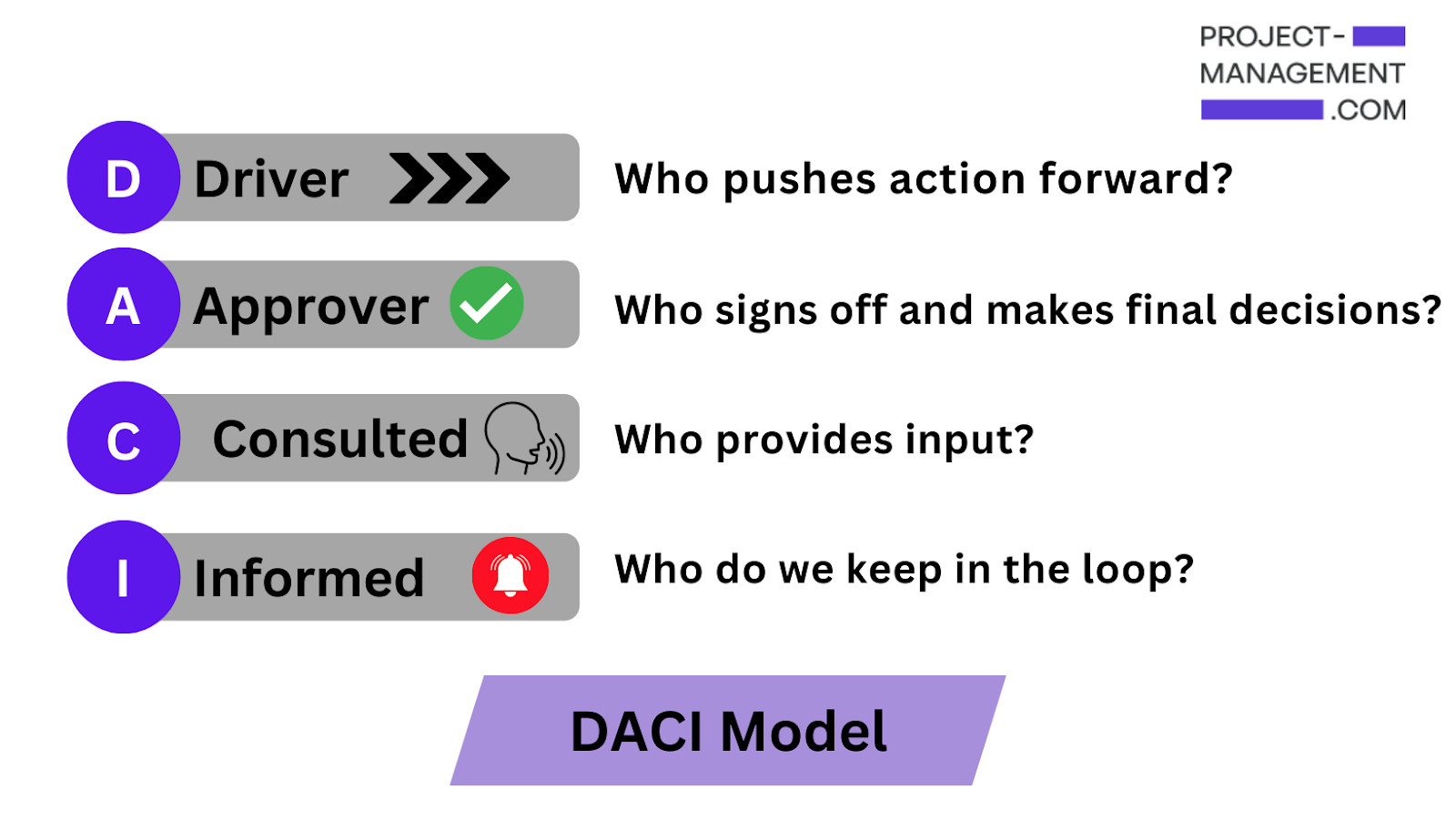
In the spring of 1992, a clear, bubbly beverage ‚Äì Crystal Pepsi made quite a splash in the market until it completely bombed and went out of production in a few months. Why this project failed had many reasons, even quite interesting ones such as corporate sabotage, the saturation of ‘clear’ products in the market (clear shampoo, clear soaps, and clear beer too, …gasp! ), and a lack of communication (bottlers and warehouse workers had maintained that the soda didn’t taste quite ‘right’). But, it still garnered a small-cult following. In 2016, banking on the smidgen of encouragement from Crystal Pepsi’s fan following, Pepsi improved their product, worked on the lessons learned from the failure, and relaunched successfully, read: flew off the shelves.
But companies and businesses do not just have the one failed project; they have multiple ones. Yet, even after failed projects, project managers and companies soldier on to soar.
Apple is the poster child of overcoming failures and reinventing the definition of a successful project.
The reason why these stories are famous and applauded is not their seemingly catastrophic failure, but their phoenix-like rise from the ashes of defeat. If your project has failed or is on the verge of failing, don’t worry.
Failure is fundamental to the growth and not that rare at all. Research suggests that businesses experience project failure often. In fact, 17% of large-scale IT projects fail so miserably that they almost run the company to the ground. Let us explore project failure together, starting right from understanding it, recognizing it, to dealing with it and moving on.
Recommended article: Delivering large-scale IT projects on time, on budget, and on value
How Do You Know If a Project Is Successful?
Organizations often don’t define failure or definite success. We don’t establish what failure looks like to us. The lack of such a definition allows internal and external stakeholders to label projects a failure very easily.
We believe that project success is only delivering a quality product and happy stakeholders, but depending on the goals and the motivation for the project, it can vary.
If the budget is the most important thing to your stakeholders, quality could perhaps be priority number two. If customer satisfaction is the most critical factor of measuring success, then the team has the liberty to loosen the triple constraints (scope, schedule, and cost) a little and put in extra time and resources.
But, if you gained more than you lost ‚Äì a valuable lesson, an ‘Aha! ‘ moment, you could term the project a personal success.
Project success can be a composite of personal or project management success and professional success or project deliverable success. The bottom line ‚Äì don’t brand a project a complete failure unless you’ve considered all that you’ve earned.
“Ultimately, we all have to decide for ourselves what constitutes failure, but the world is quite eager to give you a set of criteria if you let it.” ‚ÄìJ.K. Rowling.
So it is safe to say that projects very rarely fail on the project management or personal front, even when they fail on the project deliverable front. And when they do, there are specific reasons to be examined.
Why Do Projects Fail, and How to Find Out Why Your Project Failed?
Project failure is a complex phenomenon that depends on several varying factors that need to be examined thoroughly for all nuances because it gets tough to point that out sometimes.
For example, Nintendo NES, the most successful frontrunner in the video game world, had a great run in the ’80s and the ’90s. By the late ’90s, however, its charm and aura started to wear off. Industry experts were baffled. But, there was a multitude of reasons for failure, lack of competitor research being a surprising one. With innovation and research, Nintendo built a game with two perceivably insignificant characters, ‘Mario ‘and ‘Luigi ‘, who turned sales around.
Research should start with understanding why projects tend to fail and what factors influence project failure so that you can be better prepared for your next project.
Finding Out Why Your Project Failed
How you examine the reasons for project failure is very important. Most project managers and leaders do not want to confront themselves with the hard questions and face cold, hard truths but settle for surface-level scrutiny.
Instead, you can resort to the ‘Five Whys’ technique of lean management that will get to the root of every problem. The Five Whys technique was developed in the Toyota Motor Corporation.
Taiichi Ohno, of Toyota, in his book, says, “By repeating ‘why’ five times, the nature of the problem, as well as its solution, becomes clear.” You ask, “Why did the project fail?” and once you get a broad answer, ask why that happened, in a bid to question even the tiniest of detail and reach to the deepest level. With this process, you are sure to collect enough data for you to deduce the causes of failure accurately.
The ‘Rapid Assessment and Recovery’ technique is the best method to deploy when you do not have the time and the luxury to implement the Five Whys method, but your project is still salvageable.
Assessment and recovery should be as rapid as it should be thorough. It includes compiling and analyzing data of all entities, operations, and processes and figuring out the plan of action with data-backed insights that will save your project from completely failing.
Why Do Projects Fail in General?
Apart from causes of project failure that are specific to every project, these are some primary ones:
1) Improper Requirements Management or Unclear Requirements: Requirements form the cornerstone of the fortress that is your project. If your foundation stone isn’t laid right ‚Äì you fail to manage requirements efficiently, your fortress comes crumbling down to the ground. When the ‘What’ is not clear, ‘How’ becomes difficult.
Fulfilling a project’s requirements should not be like shooting at a moving target.
The product development team cannot work together towards one common goal and is left throwing darts in the dark.
Instead, ensure that for all functions of requirements management, from requirement gathering to requirements tracking, you establish best practices and invest in a useful tool that will make requirements management and requirement change management easy and efficient.
2) Gaps in Communication: Poor communication escalates into a catastrophe very quickly because it is a silent killer (pun intended).
You cannot see the gaps in communication unless miscommunication has already led to a major misfire.
A study conducted by the Project Management Institute concludes, “Companies risk $135 million for every $1 billion spent on a project, and $75 million of that $135 million, 56% is due to ineffective communications, indicating a critical need for organizations to address communications deficiencies at the enterprise level.” Communication truly is the glue that holds together your team and various functions of the project.
Recommended article: The high cost of low performance and the essential role of communications
How to mend gaps in your project’s communication? Do what healthcare giant DaVita’s then CEO Kent Thiry did. He championed a critical change. He implemented an online software enabling spontaneous communication and collaboration, and a “Voice of the Village” meeting where teams share updates. DaVita went from near bankruptcy to international prominence.
3) Improper Planning: “Failing to plan is planning to fail.” “A goal without a plan is just a wish.”, “For tomorrow belongs to people who plan for it today.” These and many more are platitudes that emphasize the importance of planning. As tiresome as they may sound, they’re still true. Yet, many project managers resort to a haphazard, ‘we’ll see when the time comes’ approach that proves detrimental to the project. Project teams are lost without a schedule baseline or a fixed POA to follow. The Project Management Institute reports that 9.9% of every dollar invested is wasted due to poor project planning.
Recommended article: Success in Disruptive Times
Project managers must ensure that they start planning for a project well in advance before they jump into the execution phase. I have prepared a template that helps me check off items that need planning. There are many such customizable templates available on the internet. You can also opt for project planning tools to ensure that you plan for all levels of tasks and follow through.
4) Using Complex Tools Without Prior Practice: As many tools as there are, project managers need to understand that the complexity of tools seriously affects and delays routine project tasks. It’s not always a good idea to start with a new tool in the middle of the project. When and how you introduce a tool, what kind of a tool it is, and how prepared your team is are the primary factors that one needs to consider.
While managers often take into account the process changes and do a good job getting their teams acquainted with new task and project management tools, managers don’t take into account the social change that comes with a new tool. Everyone needs to get the hang of the tool that they’ll be using to log and share critical project work.
While choosing, make sure to involve the team and go for a SaaS tool that has excellent support and offers a trial.
5) Absence of Good Project Leadership: Peter Drucker— the father of management, said, “The productivity of work is not the responsibility of the worker but the manager.” A project manager is the backbone of the project. If you’re entrusting all your resources required for project success, you should ensure that you get the best person for the job who can skilfully navigate even when the waters get choppy. Because projects, as we know, are never predictable. Unforeseen challenges could always rear their ugly heads.
Managers who cannot utilize the resources at their disposal correctly, be it getting the best out of people or following through timelines and plans, cost businesses a lot every year. A foolhardy manager invites all other problems such as communication gaps, improper planning, and inefficient tracking to the project. Managers must seek proper training and see to it that don’t lose the reins.
6) Inefficient Project Tracking: Managers and project teams, especially in the later phases of the project, are extremely busy getting things done. Often, tracking all work, efficient monitoring at every task and personnel level, or testing integrated parts is not done as often as it should be.
An interesting example comes to mind ‚Äì the Airbus A380. It was one of the most complex and ambitious projects that Airbus had designed. I remember there being much buzz around ‘the world’s largest passenger jet’ with all the luxuries of a five-star hotel.
But the Airbus A380 failed to take off initially. The project’s design and development were split across 16 locations in England, France, Germany, and Spain. Engineers in France began to realize that there is a pervasive issue with the electronic design ‚Äì wires and cables were too short even though they measured up to specifications.
Different design groups working on the project had used different Computer-Aided Design (CAD) software to create the engineering drawings. If only there had been regular testing and integration of separate parts, proper tracking of the progress of globally split teams, They could have caught the issue before it escalated into a blunder.
Tracking projects may seem like extra work if you don’t automate the process with specialized tools, but irrespective of how you do it, you must always spend resources, efforts, and time to track resources thoroughly.
These are the primary factors that can influence the success of a project. But what if you’re already deep into the project and you feel like it is not progressing the way you want?
How to Recognize a Failing Project and How to Decide When to Scrap a Project?
Spotting small issues that can culminate in the entire project failing is very difficult. Most of us are so used to projects not going the way we envisioned them to go, that we keep soldiering on, but throwing good money after bad does not help. Troubled projects cost you and your company a lot of resources and effort.
I’ve been on this kind of a sinking ship and salvaged some of it somehow, but had I known to recognize the signs of failure earlier; I could have made the project the success that it should have been. Through the years, I have trained myself and fellow project managers to recognize the following signs that signal a doomed project.
1) Lack of Support and Vision: While you shouldn’t expect everyone to share the project vision, it doesn’t mean that there should be an apparent lack of interest. Ultimately, every team member should be working toward the same goal. There can be different motivations but not different goals.
Are the project team members not taking enough initiative? Have stakeholders started dropping out of meetings? Are the clients not animated enough?
The latter two are incredibly telling questions that you can ask yourself because a lack of interest signifies that the clients and stakeholders may have doubts about the project.
Within the team, every project has an idea person and a project cheerleader who drives the vision and champions the project. They embody the spirit of the project. If the project champion has abandoned it or has lost the drive and vision, it may signal a failing project.
How to Fix It: Convey your concerns to stakeholders and clients clearly and make an effort to understand why there seems to be a lack of interest. If project teams are not animated enough, make sure that you, as a project manager, share your vision and drive with them.
2) Broken Lines of Communication: If different teams within the project team are not in sync, it means that communication has weakened. Even teams of seemingly disconnected principles need to be on the same page. Also, check if all tasks and dependencies in your project are urgent. If yes, it means that there are numerous communication delays, and priorities have not been communicated properly
How to Fix It: Conduct meetings or even informal update sessions that inform internal project teams about the progress, schedule, and plan for each team.
3) Slow Progress and a Gut Feeling: As project managers, when you feel like you are losing the plot, chances are it is much graver than you assume. Filtered through levels of hierarchy and personnel, things going wrong are often not reported as gravely or reported late. If you feel like the project has no velocity and is progressing much slower than expected, it could mean that it is riddled with problems that could lead to its demise.
How to Fix It: If you see minute but frequent anomalies, scrutinize every task and phase of the project to ensure that everything is going according to plan. If it is not, set up a small task force to asses what is going wrong, this will ensure that you involve all levels of team members and reach the root of the issue faster and more accurately.
4) Stakeholders Changing Their Minds: If the upper management or the stakeholders change their minds about your project, there remains ambiguity in the goals and the course of action. If this is happening to your project, it could mean that the upper management is less keen on your project, or the clients and external stakeholders are difficult to deal with. Both of these issues can leave teams in a lurch, and the project gets delayed or scrapped ultimately.
How to Fix It: If upper management is flaking on your project, revisit the purpose of the project, and examine if that has anything to do with the disinterest. If it is so, you may need to revaluate and research further to modify your project. If stakeholders and clients keep changing their requirements, document all changes, and ensure you establish a change management process.
5) Resource Scarcity: Is your team stretched too thin because they have to be a part of other projects as well? Shared resources can disorient the team, shake their focus, and hamper overall productivity. Overworked teams cannot go on forever, and project work comes to a halt.
How to Fix It: Ensure that you have a dedicated team that works only on one project at a time and shares your vision and work patterns. If you cannot get a dedicated team and cannot hire new team members, consider outsourcing some tasks.
6) Changed Market Trends: This is a crucial concern primarily for product-based companies. The ‘Time to Market’ for some products is very long. Market trends play a critical role in determining product innovation and project execution and can change lickety-split. This makes the product stale.
For example, around 2010, two industry tycoons, Sony and LG launched televisions with 3D technology, following the global, colossal success of the 3D movie ‘Avatar.’
However, this trend did not translate into many homes because the buyers had moved on by the time the product arrived, and it proved to be complex, expensive, and inconvenient.
Tim Alessi, the director of new product development at LG, said, “3D capability was never really universally embraced in the industry for home use, and it’s just not a key buying factor when selecting a new TV.”
How to Fix It: If you feel like your project is already late, you no longer have the first-in or close-second advantage, or that the market landscape has begun to change, look for gaps in the market and the pace of other entrants. Adopt distinctive positioning and powerful marketing strategies that serve to revive and modify trends. At the same time, explore new markets geographically. Essentially, either follow and find the trend or change the trend.
If your project exhibits any of these signs, take a harder look, be honest, and asses whether it has the legs to go the distance. Either way, you have only two options – complete recovery or complete termination. Let us explore both of these scenarios.
How to Recover a Failing Project?
Once you have identified that your project isn’t working anymore and know why you have come half the distance, knowing is half the battle — provided that you led a structured, specialized effort to asses and analyze what went wrong and how.
Now, you need to develop a recovery plan and a risk management plan. In the case of service-based projects, it is vital to communicate the state of the project to all stakeholders. Then, develop the project recovery plan. Don’t hesitate to call in experts to get the project back on track. I’ve seen outside and expert perspectives do wonders for projects on the brink of failure.
This time around, tighten control and deadlines and push yourself and your team a little harder to bring your project to a stable and steady-state. Adopt a top-down approach and micromanage for a while if need be.
What to do When a Project Completely Fails?
Many a time, despite all efforts, projects fail. While we have now discussed why a project fails and how to recognize and fix a failing project, we have not come to the hardest part of understanding failure – accepting it, closing the project and moving on to better things. You should take the following steps when it is clear that your project has failed. Often, it is hardly in the hands of the project manager. Executive sponsors are the ones that can scrap projects.
Step 1: Communicate With Stakeholders and Clients
Arrange meetings with key stakeholders to convey what happened and why, and the next step as determined by your organization. Do not delay updates. Why prolong the pain unnecessarily? Rip the band-aid quickly. Be detailed and make sure to make clients understand. Be open to criticism, questions, and confrontation. Being honest and factual is the best approach to adopt in such situations. Emails leave room for misinterpretation and run the risk of being neglected or lost. Go for meetings in person video calls and evaluate if a replacement project can fulfill the primary objective that drove the project.
Step 2: Close it Officially.
Check out your organization’s official procedure to be followed while closing a project and write a detailed final report that will mark the end once for all. Be painstakingly accurate and quantify the outcome of the project. If you think there is enough fuel to restart the project, and the business case is valid, state your recommendations for a proposed plan of action to reopen it.
Step 2: Evaluate to Document Lessons Learned.
I have realized that the lessons learned from failed projects were perhaps more valuable than the project itself. To quote one of my favorite authors, J.K Rowling, again, “The knowledge that you have emerged wiser and stronger from setbacks means that you are, ever after, secure in your ability to survive.” ing the lessons learned gives you enough wisdom to save your projects from risk factors and not repeat the same mistakes the next time.
What Didn’t Kill You Made You Stronger: Coping With Project Failure
Walt Disney, the pioneer of animated cartoons and a tremendously successful businessman, was no stranger to failure. He said, “All the adversity I’ve had in my life, all my troubles and obstacles, have strengthened me. You may not realize it when it happens, but a kick in the teeth may be the best thing in the world for you.”
Rovio, the company behind the Angry Birds franchise, had made over 51 games before Angry Birds and was on the verge of bankruptcy. However, in 2009 they made this 52nd game that fetched them stupid amounts of success and 330 million in revenue (as of 2019). This just goes to show that if you miss the shot, get back on the court and make another one until you make a basket.
“I’ve missed more than 9000 shots in my career. I’ve lost almost 300 games. 26 times, I’ve been trusted to take the game-winning shot and missed. I’ve failed over and over and over again in my life. And that is why I succeed.” – Michael Jordan.
These quotes may seem inspiring, but perhaps not very relatable coming from incredibly successful people. Stories from everyday life are what give hope. So take from me, someone who is just like you – not a celebrity, a runaway success, or a viral sensation.
My project had failed, and I could see no way of recovering it. I felt like I had let my team and my client down. But then a friend suggested that whenever I experience failure, I should tell myself, “This too shall pass.” There have been situations where I felt like my project was going berserk. But “This too shall pass” gave me the strength to get over and rebuild faster and move on with a plan for my next project.





